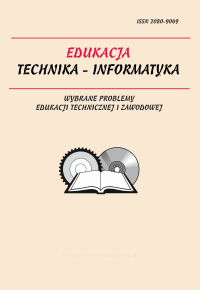Pupillary response as an indicator of the processing load while solving multiply choice science tasks
Keywords:
eye-tracking, pupil dilation, didactics of science, problem solvingAbstract
In this paper we present results of the research on monitoring and analysis of the pupil dilation changes in the groups of high school students, university students and experts while solving a multiple choice science tasks. The aim of the research is verification if there are differences between physiological responses in the distinguished groups, connected with the subjective estimation of the tasks’ difficulty and the level of motivation to solve them. We assume that the analysis of the relative changes of pupil dilation can be an valuable indicator of the level of motivation. The process of solving tasks by people having insufficient experience or lower level of knowledge is connected with greater processing load and mental effort. It also can be observed by engaging greater psychophysiological resources, and particularly by higher values of the relative pupil dilation changes. We claim that for individuals, who were motivated enough to solve a problem, the pupillary response is negatively correlated with the cognitive ability.Downloads
Published
2014-12-30
How to Cite
ROSIEK, R., & SAJKA, M. (2014). Pupillary response as an indicator of the processing load while solving multiply choice science tasks. Journal of Education, Technology and Computer Science, 10(2), 368–374. Retrieved from https://journals.ur.edu.pl/jetacomps/article/view/6620
Issue
Section
ICT IN EDUCATIONAL RESEARCH
License
Copyright (c) 2014 Journal of Education, Technology and Computer Science

This work is licensed under a Creative Commons Attribution-ShareAlike 4.0 International License.

